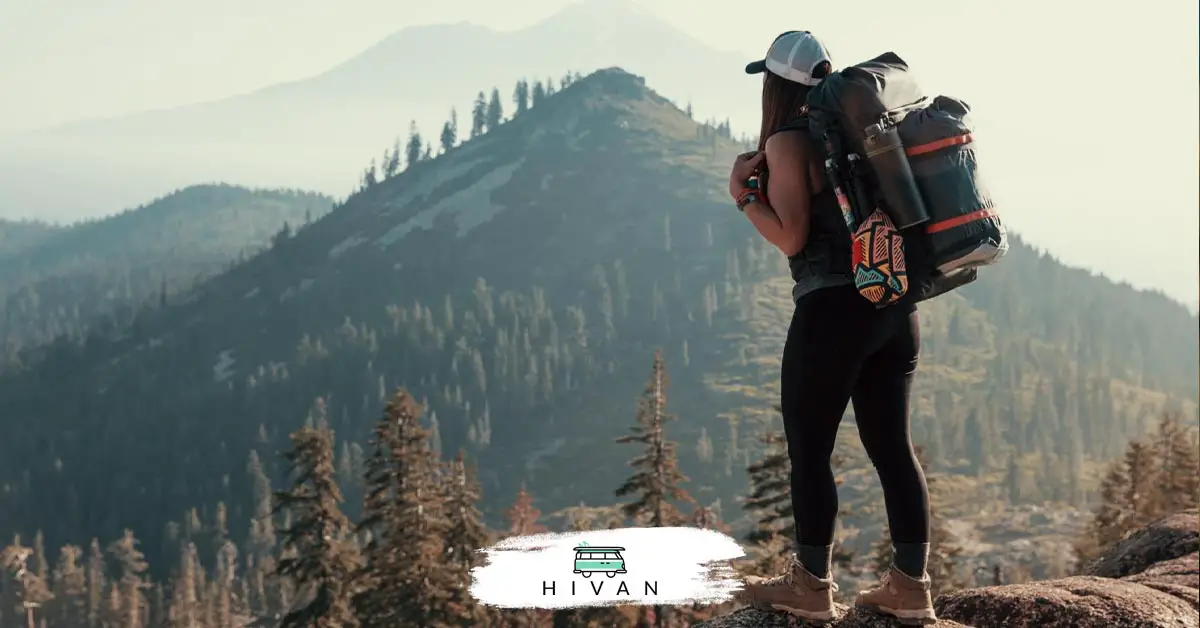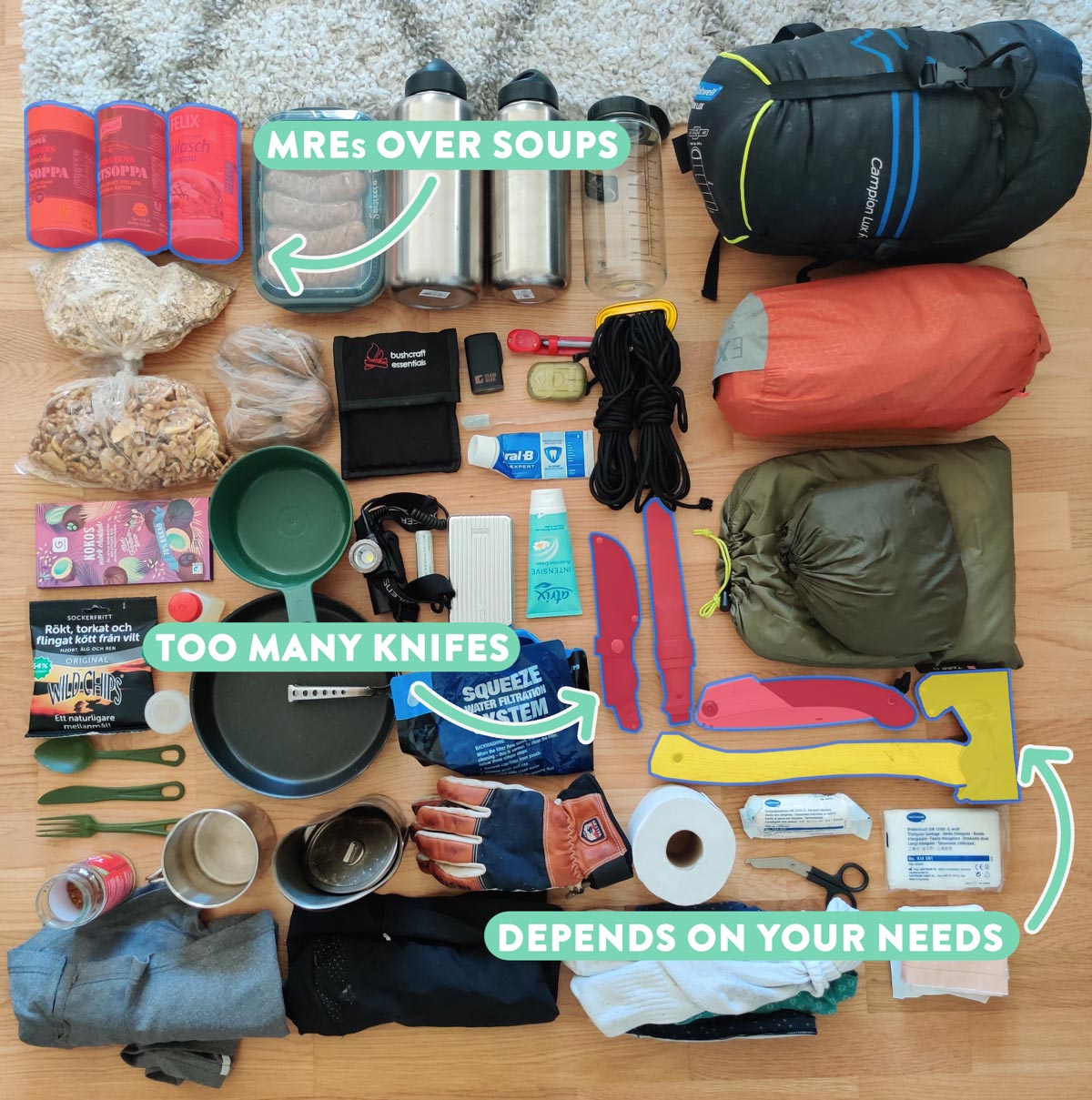Hi-van is supported by its audience. When you purchase using our links, we may earn an affiliate commission (no added cost to you). Learn more
Backpacking requires careful planning, especially for longer trips. Indeed, you should consider factors such as the duration of your treck, water availability, and food weight and volume. One common question is: how much food can you carry backpacking?

Ten days’ worth of food is the maximum you can carry while backpacking. Ideally, you should pack two pounds (0.90 kg) of food per day, and carry about 5 to 7 days worth of food, ten days would be the maximum.
The amount of food you should take with you on a backpacking trip depends on various factors, such as the duration of your trip, your level of physical activity, your personal dietary needs, and the availability of food sources along your route.
Keep reading to learn which food you should pack for your next hike, along with a few tips that will be helpful for beginners and veterans alike.
What Types of Food Should You Carry?
Packing for a trip can leave you fraught with choice. Even the best organizers can sometimes get stumped for packing for a few days on the trail.
Don’t over pack food, be strategic.
![]() Personal tips: Non-perishable, high-calorie foods are the best choice for extended backpacking trips.
Personal tips: Non-perishable, high-calorie foods are the best choice for extended backpacking trips.
Your bag capacity is limited, pack foods that are calorie dense but take up as little space as possible.
Estimating the intensity of your backpacking trip is crucial to determine your calorie needs. If you plan to cover long distances every day, your body will require more energy than if you only hike a few miles per day.

For example, in this Reddit thread, someone shared his/her hiking gear for 2 days. He was advised to prioritize Meals Ready to Eat (MREs) over soups and to pack fewer knives.
The hatchet was also questionable and you should only consider it if you plan to cut larger branches/trees.
That being said, here are some of the main things you should focus on when packing for a trip:
- The weight and volume of your backpacking food are just as important as the hiking gear you bring with you, if not more so.
- Try to estimate your average need for calories and plan accordingly. For example, thru-hikers can burn up to 4,000-5,000 calories, due to long days and high mileage.
- Choose food with more calories per ounce (100-125 calories per ounce) to reduce overall food weight.
- Fats are a valuable calorie source, with 225 calories per ounce, making them a brilliant choice for thru-hikers. Olive oil or dehydrated dairy products can help boost calorie content and fuel the body efficiently.
Laura Lancaster, who has an extensive backpacking experience and hiked the Pacific Crest Trail and Wonderland Trail, shared a high-calorie recipe for thru-hikers on msrgear.com
![]() Personal tips: You can find plenty of valuable resources on subreddits like r/trailmeals and r/HikerTrashMeals. Don’t hesitate to ask for feedback and advice there.
Personal tips: You can find plenty of valuable resources on subreddits like r/trailmeals and r/HikerTrashMeals. Don’t hesitate to ask for feedback and advice there.
Here are some food options to consider:
- Dehydrated or freeze-dried meals: If you need a lightweight meal, dehydrated or freeze-dried meals are great options. They come in different flavors and types, like pasta, rice, and stew.
- Energy bars and snacks: These high-energy and portable snacks can provide quick bursts of energy and help you stay fueled throughout the day. Examples include trail mix, jerky, granola bars, and dried fruit.
- Nut butter and crackers: These can be an excellent source of protein and healthy fats, and can be easily packed and consumed on the go.
- Instant oatmeal or cereal: These can be a satisfying and nutritious breakfast option that can be prepared quickly and easily.
- Cheese, salami, and crackers: These can provide a good source of protein and are easy to pack and consume.
- Powdered drink mixes: These can help you stay hydrated and replenish electrolytes during your trip.
Also, remember to pack utensils, a stove, and fuel as required to prepare your meals. Consider your dietary restrictions and preferences while choosing your backpacking food.
Stay Hydrated
Access to drinkable water can sustain you until the nearest stop to replenish food supplies.
When packing water, factor in the intensity of the hikes you plan to go on. If you plan to do a lot of high-intensity, long-distance walking, having sufficient water is extremely important.
Nothing puts a damper on walking a long stretch of land like getting dehydrated.
Here are some tips on how to plan for hydration:
- Carry on Water: Plan on carrying at least 2-3 liters of water per day, depending on your individual needs and the availability of water sources along your route. Consider using a hydration bladder or water bottles that are easy to refill and carry.
- Water filter or purification tablets: If you plan on using natural water sources, such as streams or lakes, you’ll need to filter or purify the water to make it safe for drinking. Consider using a portable water filter or purification tablets to ensure you have access to clean water.
- Electrolyte supplements: If you plan on doing strenuous activities in hot environments, you may need to replenish your electrolytes to avoid dehydration and cramping. To stay hydrated and restore nutrients, pack electrolyte supplements or sports drinks.
Also, plan your route and water sources ahead of time, and carry a map and compass or GPS device to assist you in finding water sources if necessary. Additionally, be mindful of your water consumption and avoid wasting water unnecessarily.
Conclusion
In some ways, packing can be one of the most challenging things to do. However, packing the right foods while also optimizing your pack weight to not weigh you down does not have to be difficult.
Ensure that you always have enough water, prioritize nutrients and calories before anything else, and snack intermittently to keep your energy up to make sure your trip remains as fun as possible.
Backpacking is one of the most enjoyable outdoor activities. Proper packing can make or break your wilderness experience.
Find this content useful 🙂 ?
Subscribe to our Newsletter and get a free Solar Electric Diagram + shopping list.

